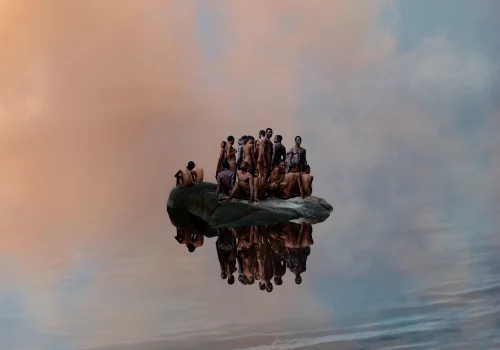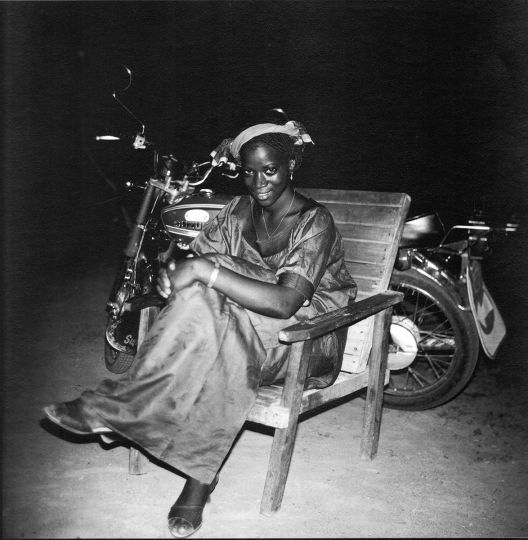Encounters in Bamako, chapter 4 – Dwelling made of fallen angel feathers
The Rencontres de Bamako – Africain biennal of Photography delivers a high-flying 2022 edition, focused on “multiplicity, difference, becoming and heritage”. Our correspondent Arthur Dayras relates the fourth exhibition organized at the Memorial Modibo Keita.
Lovers of Aimé Césaire’s words will have recognized the verses from Aimé Césaire and his poem Défaire et refaire le soleil. They are placed in exergue of each exhibition. Césaire comes to indicate the orientation, the rhythm, the course of the poetry of each exhibition. “When we arrive at this place of the poem, each one is already traversed by the contentions of the history and the ambiguities of the existence”.
There is something of Césaire’s twirling poetry in the work of Luvuyo Equiano Nyamose. The South African artist captures the joy and sparkle of the bathers on Durban’s waterfront. The beaches of this coastline were once popular with white South Africans before a black social life (ebishi) took over the once segregated, or at least socially marked, places. There is all the simplicity of summertime seaside moments, its indolent crowds and the splashing of children playing in the sea. Here, to badly paraphrase our poet, the residence would be taken back to the feathers by the fallen angels.
Another aquatic game with the dreamlike settings of David Uzochukwu. Mare Monstrum / Drown in my magic tells with a subtle imagination, proper to the evocations, the myth of the Mediterranean and its contemporary crossings, sadly tragic. Without falling into a realistic pathos nor into the documentary style, David Uzochukwu seizes rather the imaginary of mermaids to face the monster of the sea. The subject matter is both subtle and whimsical, and if one may say so, extremely well thought out.
Finally, we must say a word about the collective Association of Women Photographers of Mali (AFPM), composed of artists Diabate, Tima Diallo, Oumou Diarra, Anna Landouré, Ramata Maiga, Mariam Niare, Abi Gail Sagarra, Nana Sangare, Awa Sidibé, Aminata Sissoko, Kane Sissoko and Oumou Traore. They have converted a minibus of the SOTRAMA network into a photographic studio. These buses carrying fifteen people are recognizable among all for their colorful decoration singular to each driver and their multitude, prompt to cover the quite extensive network of Bamako. They have become in extenso the symbol of this city, and in a spirit of reversal, the AFPM collective has transformed the interior of one of these minibuses to immortalize its inhabitants, their worn faces of daily life, their hopes and their inner thoughts. As Fatoumata Diabaté says, “these looks tell Mali much more strongly than a long speech. They are the faces of an era compressed between hope and discouragement.
The Bamako Encounters 2022
Mémorial Modibo Keita
https://www.rencontres-bamako.org


















